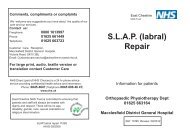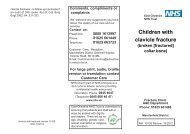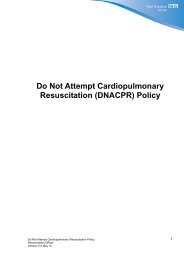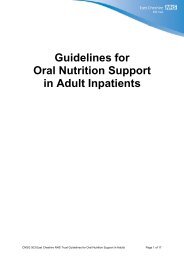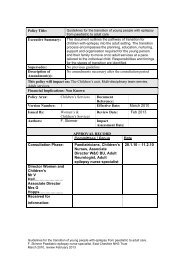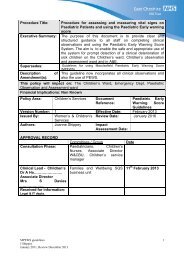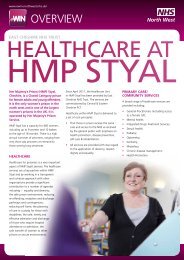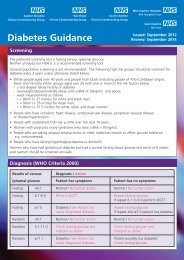Post death procedure - East Cheshire NHS Trust
Post death procedure - East Cheshire NHS Trust
Post death procedure - East Cheshire NHS Trust
Create successful ePaper yourself
Turn your PDF publications into a flip-book with our unique Google optimized e-Paper software.
SECTION FIVE – GUIDELINES - REQUIREMENTS FOR PEOPLE OF DIFFERENTRELIGIOUS FAITHSThe United Kingdom today is a multicultural, multi-racial and multi-religious society. Thisoffers a great challenge to all areas of health care, but none more so than nursing. It isincumbent upon nurses to be aware of the different religious and cultural rituals, whichaccompany the <strong>death</strong> of a patient. Nurses are also required to possess the informationpertinent to the legal requirements for the care of the dead.The subject of ‘<strong>death</strong> with dignity’ has received much prominence of late in the health carepress (Hayes & van der Poel, 1990; Helman, 1990; Green & Green, 1992) and rightly so, forit is the execution of last offices with care and dignity that concludes the care which hasbeen offered. From the viewpoint of many bereaved relatives, the way that a deceasedloved one is treated forms an important part of their memory of a hospital’s care.It is essential then that the correct <strong>procedure</strong>s are followed during last offices, and that everyeffort is made to accommodate the wishes of patients’ partner or relatives (Neuberger, 1978:Olivant, 1986; Hospital chaplaincies Council, 1992; Speck, 1978). This is central to theconcept of holistic care for the patient, and if we disregard such <strong>procedure</strong>s for our patients,we also disregard both patients’ and families’ dignity (McGilloway & Myco, 1985; Wald,1986; Speck, 1988; Spector, 1991).The following are only guidelines, taken from the Manual of Clinical Nursing Procedures(2004): individual requirements may vary even among members of the same faith. Varyingdegrees of adherence and orthodoxy exist within all the world’s major faiths. The givenreligion of a patient may occasionally be offered to indicate an association with particularcultural and national roots, rather than to indicate a significant degree of adherence to thetenets of a particular faith.For further information, please refer to the booklet Privacy, Dignity, Religious and CulturalBeliefs that is available on the ward.11/34





